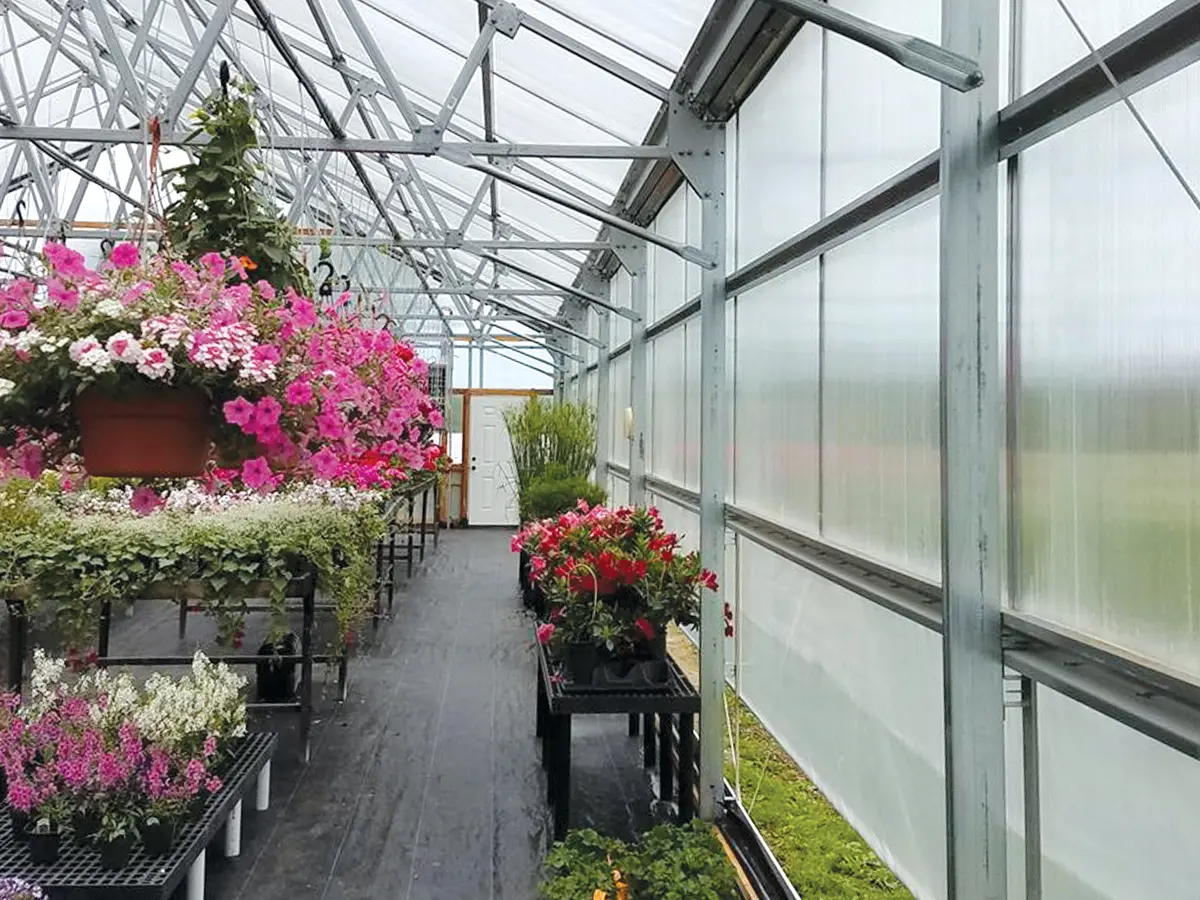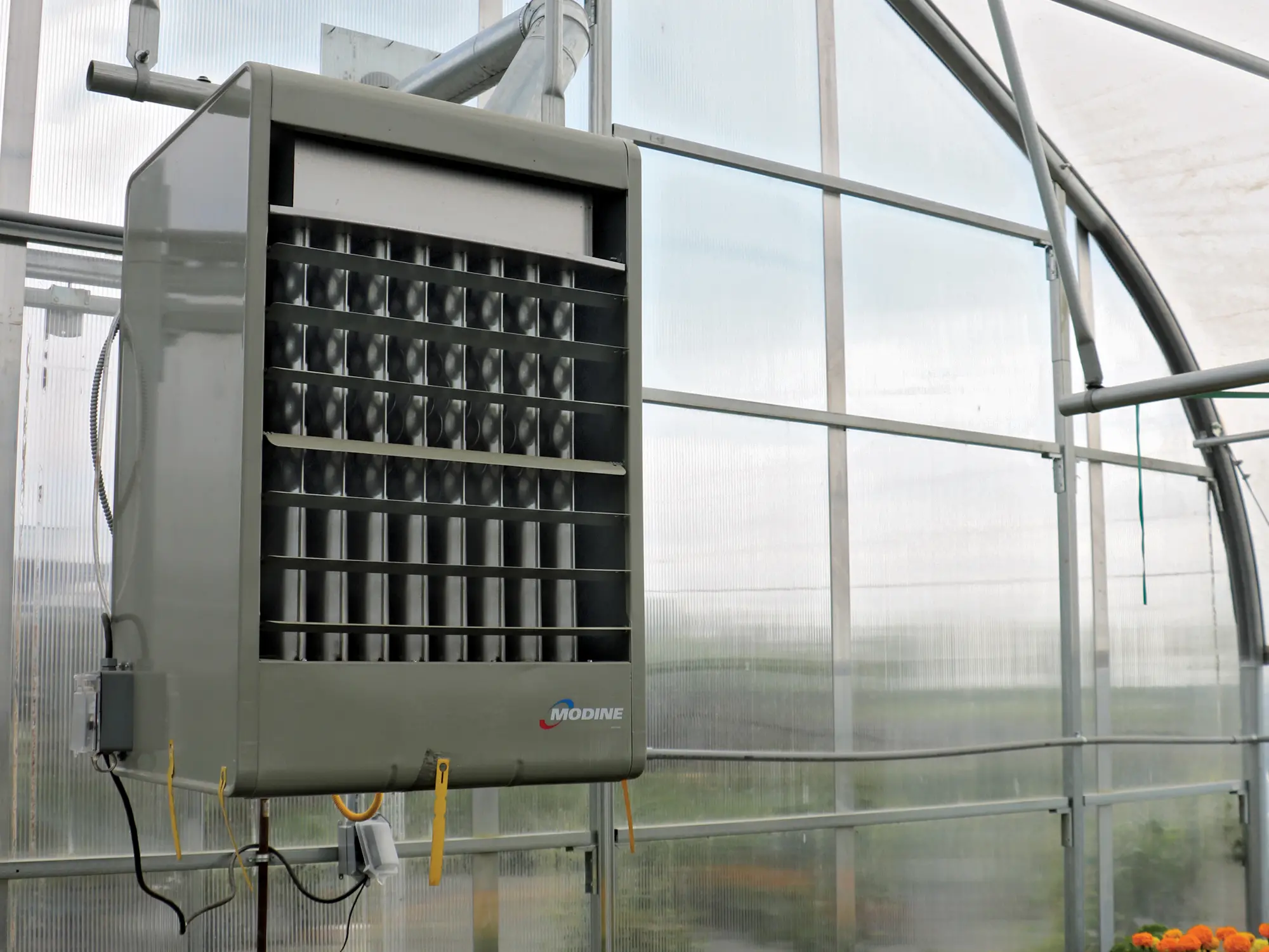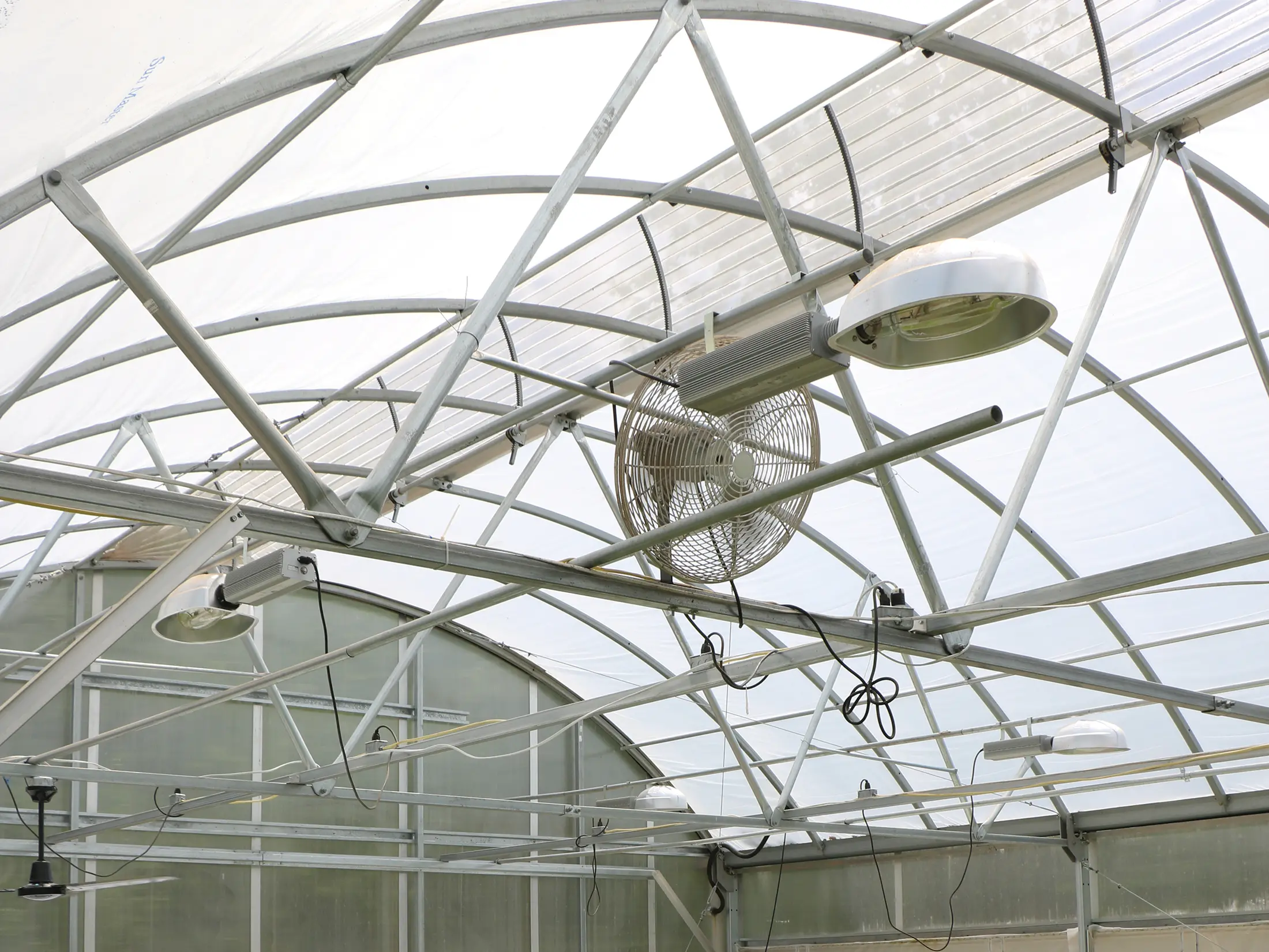Looking To Operate A Year-Round Greenhouse? Here’s How
When operations want to grow crops in a year-round greenhouse, the requirements for doing so can be vastly different, depending on their location. In warmer regions, for instance, the cold season is not as severe, so growers don’t need their structure to double as a winter greenhouse to stay operational.
However, across northern climates, growers must follow more rigorous guidelines to ensure their greenhouse is prepared for the change in weather, including an extreme drop in temperature and heavier snowfall. Although it’s best practice to perform yearly winterization, the most successful growers will also have a strategy in place from the very beginning to make their seasonal transitions as smooth as possible.
This process begins during the early stages of a project, where growers will need to have an understanding of insulation, heating and other environmental factors impacted by winter, like lighting, air exchange and CO₂ levels. With knowledge of these important elements, operations will be able to design a greenhouse that helps them maximize their growing potential, while staying energy-efficient and remaining profitable 365 days a year.
UNDERSTANDING INSULATION IN A YEAR-ROUND GREENHOUSE
A year-round greenhouse is only as effective as the materials it employs, and growers need a structure that’s not just capable of withstanding their region’s harshest snow loads, but also retains heat and shields crops from cold temperatures. To achieve this, growers must choose a cladding that provides a high degree of insulation, which requires basic knowledge of R-values and U-values.
R-value represents a cladding’s thermal resistance and is a measurement of its ability to retain heat. A higher R-value number means cladding will offer superior heat retention. U-value measures heat loss through a given material, so if cladding has a lower U-value number, it means it will allow less heat to escape from a greenhouse.
Different cladding options can vary greatly in their R-value and U-value ratings, so growers must choose wisely when selecting their greenhouse covering material. Without a high degree of heat retention, year-round greenhouse operations will suffer from excess heat loss as temperatures drop, forcing them to run their heaters longer and spend more money.

For northern growers looking to utilize a year-round greenhouse, it will be worthwhile to go with a higher-quality cladding option, like twin-wall polycarbonate or inflated double poly film. While double poly film can be a great cost-effective option, twin-wall polycarbonate is generally going to offer the best cladding for winter growing.
Available in 4mm, 6mm, and 8mm thickness, twin-wall polycarbonate can provide an R-value as high as 1.72 and a U-value as low as 0.62. In comparison, inflated double poly film features an R-value rating of 1.5 and a U-value rating of 0.66.
To maximize greenhouse performance, growers should also consider implementing supplemental insulating materials. Bubble wrap, thermal insulation foil and heat retention curtains tend to be some of the most popular options, because they are often more economical, but still help growers effectively seal in heat. In the coldest regions, it can even be a good idea to equip a structure with insulated metal panels, since these provide a year-round greenhouse with an exceptional R-value and additional protection against heavy snow.
Sign Up Now To Learn More
SIZING AND OPTIMIZING YOUR HEATING SYSTEM
Once growers know their structure won’t suffer from excessive heat loss, they can starting planning out their heating system. Before selecting their actual equipment, though, growers will first need to determine their heat source and the size of heater required to maintain their ideal temperature range.

While shopping for a forced-air heater, growers will choose between electricity, propane or natural gas to power it. Electricity is the least-efficient option, but may make sense for a number of growers based on their available resources and the scale of their operation. Still, more often than not, growers will end up deciding between propane or natural gas.
To assist with this process, growers may want to conduct an economic study and see which of the two options is going to be the most cost-effective. By looking at the rates for natural gas and propane, growers in certain regions might find that purchasing a contract for natural gas will be cheaper than heating with propane.
When it comes to sizing, heaters are measured by their output, rather than their physical size. The unit of output is known as British Thermal Units per Hour, or BTUH, which reflects the size of a space that a heater can keep warm on an hourly basis.
Growers can make several calculations on their own to determine the heating output they need, but it’s a good idea for them to work with their greenhouse supplier to ensure they obtain the most precise solution. Without the right size heater, growers will have a difficult time achieving their desired temperature range, and they will be forced to run their equipment continuously. This can hinder energy-efficiency, have a negative impact on crop yields and may cause equipment to fail prematurely as a result of excessive usage.
OTHER ENVIRONMENTAL FACTORS TO CONSIDER IN YEAR-ROUND GREENHOUSE PRODUCTION
Keeping crops warm and protecting them from snowfall aren’t the only preventative measures to consider in a year-round greenhouse. There are a number of other environmental factors northern growers should keep in mind, including lighting, air circulation and CO₂ enrichment, so they can ensure plants reach their full potential.
Sunlight has a significant impact on plant development and is one of the elements that changes the most amidst winter growing. During the cold season, days are at their shortest, which means growers have less natural light to stimulate photosynthesis. As a result, they need to supplement that lost sunlight with the help of artificial light fixtures, ensuring crops receive a consistent energy source.
When a year-round greenhouse is sealed up during the winter, ventilation and air movement present another obstacle for growers to overcome. Ideally, operations won’t want to run exhaust fans if they don’t have to, because they will allow cold, frigid air to enter the greenhouse and expel warm air that ultimately needs to be replaced.
Without this air exchange, it becomes crucial to optimize air circulation, so growers can avoid stagnant air that increases the risk of plant disease and mold development. An effective HAF (Horizontal Airflow Fan) system can provide an ideal solution, as it will effectively mix the air around and help distribute heat evenly throughout a grow space, helping to maintain crop health and establish a uniform environment.

Subsequently, this lack of air exchange can also cause carbon dioxide levels to drop, since plants will use what’s available in the structure during photosynthesis. A CO₂ enrichment system allows growers to combat this issue, enabling them to replenish carbon dioxide levels to an ideal range for proper growth. Although an optimal CO₂ concentration depends on the type of crop being produced, at a minimum, growers should use this equipment to maintain levels above 300 ppm (parts per million).
While the requirements for a year-round greenhouse can vary by region, northern growers need to take extra precautions to ensure they can continue operating uninterrupted. By gaining a greater understanding of insulation, heating systems and the other environmental factors impacted by winter, operations will be able to design a structure that maintains the ideal environment for their crops, regardless of the growing season.
Don’t miss out on potential profits with an unheated greenhouse. To get your operation set up for year-round greenhouse production, call or REQUEST A QUOTE now.
Related Articles
Preparing For The Cold: How To WInterize A Greenhouse
Many steps can be taken to prepare a greenhouse for the winter, including cleaning the greenhouse from top to bottom, testing systems’ functionality and ensuring a greenhouse is properly heated and insulated.
Greenhouse INsulation: Here's What You Need To Know To Operate Your Greenhouse In Winter
To boost crop quality, while also limiting energy consumption, cold-climate growers have to bolster their greenhouse insulation.
A Climate Controlled Greenhouse Is The Ideal Setting For Controlled ENvironment Agriculture
When growers employ a climate controlled greenhouse for controlled environment agriculture, they can give their business, and profits, the much needed boost they’re looking for.
Adding Heat To A Greenhouse
While designing a greenhouse with a heating system helps avoid refurbishing a structure later on, adding heat to an existing greenhouse is not a difficult task, and there are a range of heating options within any budget and scale of operation.

